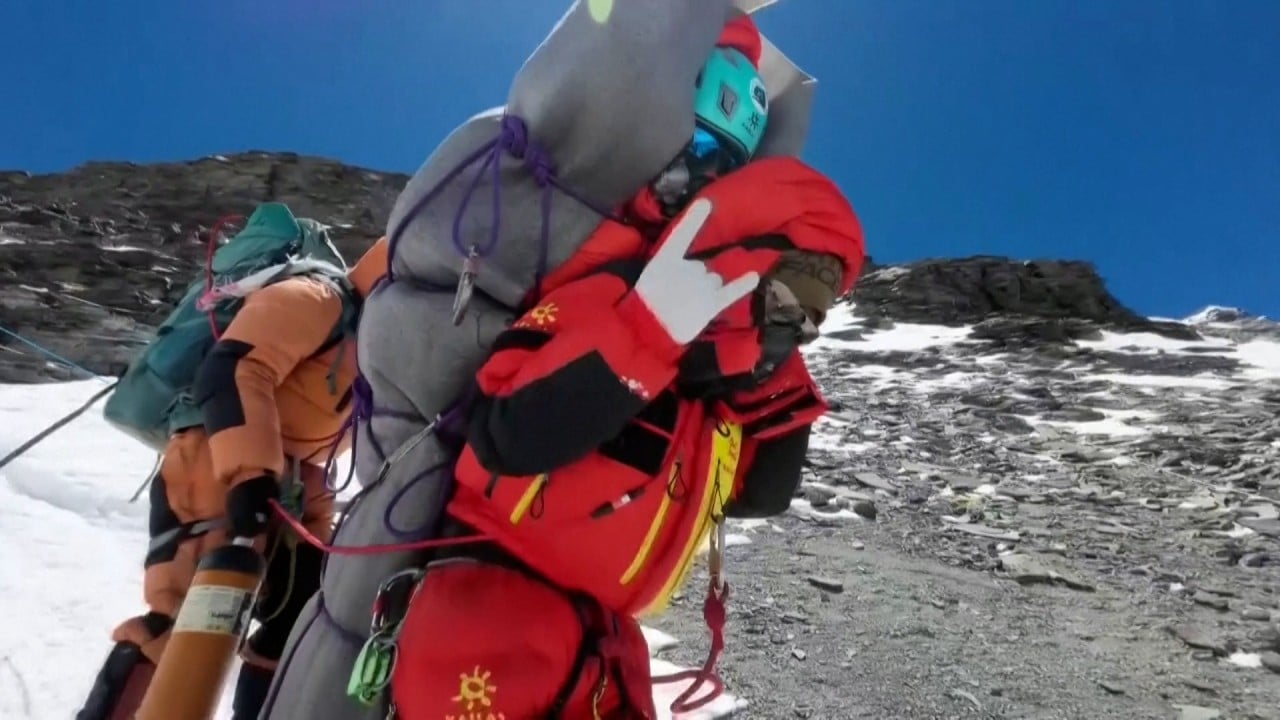
‘Death threats’ for Norway’s record-breaking climber who denies stepping over dying sherpa to reach K2 summit
- Norwegian climber Kristin Harila said she and her team did everything they could at the time for 27-year-old Mohammed Hassan, a sherpa from another team
- Drone footage shared by other climbers on social media showed Harila’s team and others on a narrow, harrowing passage, stepping over Hassan’s body
A Norwegian climber who recently became the fastest person to summit the world’s 14 highest peaks has addressed controversy after critics accused her of walking over a dying sherpa to set her record.
In a lengthy Instagram post on Thursday, Kristin Harila, 37, said she and her team “did everything we could for him at the time”.
Harila and her Nepali guide Tenjin “Lama” Sherpa became the fastest people to summit all 14 of the world’s 8,000-metre mountains on July 27 after reaching the top of K2 in Pakistan’s Himalayas.
They completed the feat in three months and one day, surpassing Nepal-born British adventurer Nirmal Purja’s 2019 record of six months and six days.
But controversy emerged on social media after drone footage shared by other climbers showed Harila’s team and others on a narrow, harrowing passage, stepping over the body of a fallen sherpa from another team, who later died during Harila’s ascent.
She was also criticised for celebrating her world record at base camp that evening.
“Nobody will remember your sporting success, only your inhumanity,” wrote one critic on Instagram.
“The blood of sherpas is on your hands,” said another.
Malaysian climber slammed for not thanking Sherpa who rescued him from Everest
Harila said she felt the need to give her side of the story due to “all of the misinformation and hatred that is now being spread”, including “death threats”.
She said she, her cameraman and two others spent “1.5 hours in the bottleneck trying to pull him up”, referring to 27-year-old Mohammed Hassan.
She then continued her ascent following a distress call from the fixing team ahead, leaving others behind with Hassan.
Her cameraman, identified only as Gabriel, was among those who stayed with Hassan, sharing his oxygen and hot water with him “while other people were passing by”.
“Considering the amount of people that stayed behind and had turned around, I believed Hassan would be getting all the help he could, and that he would be able to get down.”
Gabriel left after another hour when he needed “to get more oxygen for his own safety”, she wrote. When he caught up with Harila, “we understood that he [Hassan] might not make it down.”
“It was heartbreaking.”
On their descent, they discovered that Hassan had passed away.
Her team of four “was in no shape to carry his body down” safely, noting it would have required at least six people.
His death was “truly tragic … and I feel very strongly for the family”, she said, but “we had done our best, especially Gabriel”.
She noted that Hassan was “not properly equipped for the climb”, wearing neither a down suit nor gloves.
Numerous Instagram users defended Harila’s actions and noted the dangers involved, while others questioned why his operator had not equipped him better, with one cynically remarking that “local life is cheap”.


